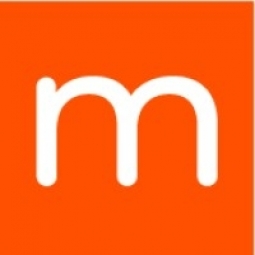Customer Company Size
Mid-size Company
Region
- Asia
Country
- India
Product
- Mindtickle
Implementation Scale
- Enterprise-wide Deployment
Impact Metrics
- Productivity Improvements
- Digital Expertise
Technology Category
- Platform as a Service (PaaS) - Application Development Platforms
Applicable Industries
- Pharmaceuticals
Applicable Functions
- Sales & Marketing
Services
- Software Design & Engineering Services
About The Customer
Integrace Health is a healthcare company based in Mumbai, India. Founded in 2018, the company has grown to a size of 500 to 1,000 employees. Integrace Health specializes in providing novel solutions in the management of orthopedics and gynecology. The company is ranked 71 in the top 100 pharma companies in India. It has also recently acquired a new business focused on women's health. The company was still a startup when Shripad Shukre joined and he was the first person to have functional responsibility for sales training. Integrace Health had already implemented Mindtickle in one of its divisions, but the platform was not utilized to its full capability and its usage lacked consistency.
The Challenge
Integrace Health, a pharmaceutical company based in Mumbai, India, was facing challenges with its sales readiness platform. The platform was under-utilized and not widely accepted by employees across the sales hierarchy. The company also acquired a new business that was not as mature as other areas of the company, leading to inconsistency in sales enablement initiatives across the organization. Shripad Shukre, Integrace Health’s sales training lead, recognized the need for a standard for uniformity. The company was also dealing with the challenge of integrating a new business focused on women’s health, which was not as sophisticated in its controls and behavior as other parts of the business. This created inconsistency across enablement initiatives in the organization.
The Solution
Integrace Health implemented Mindtickle, a sales readiness platform, to support every member of the sales team. They developed a certification program to improve adoption and everyday use. Manager dashboards were created for leaders to gain insights on their team performance, drive learning, and gather regular feedback on progress. With management using Mindtickle, reps followed suit, leveraging pitch practices and consumable content to improve product knowledge. The sales training team also established an onboarding program for new hires made up of multilevel content to effectively build knowledge. The manager’s Mindtickle induction involved a high-level walkthrough of the platform, including the various modules to drive learning, engagement, and communications, as well as the importance of Missions reviews and how to conduct them. Managers were then required to complete mock-up modules over the next week and asked to provide feedback.
Operational Impact
Quantitative Benefit

Case Study missing?
Start adding your own!
Register with your work email and create a new case study profile for your business.
Related Case Studies.

Case Study
Case Study: Pfizer
Pfizer’s high-performance computing software and systems for worldwide research and development support large-scale data analysis, research projects, clinical analytics, and modeling. Pfizer’s computing services are used across the spectrum of research and development efforts, from the deep biological understanding of disease to the design of safe, efficacious therapeutic agents.

Case Study
Fusion Middleware Integration on Cloud for Pharma Major
Customer wanted a real-time, seamless, cloud based integration between the existing on premise and cloud based application using SOA technology on Oracle Fusion Middleware Platform, a Contingent Worker Solution to collect, track, manage and report information for on-boarding, maintenance and off-boarding of contingent workers using a streamlined and Integrated business process, and streamlining of integration to the back-end systems and multiple SaaS applications.

Case Study
Process Control System Support
In many automated production facilities, changes are made to SIMATIC PCS 7 projects on a daily basis, with individual processes often optimised by multiple workers due to shift changes. Documentation is key here, as this keeps workers informed about why a change was made. Furthermore, SIMATIC PCS 7 installations are generally used in locations where documentation is required for audits and certification. The ability to track changes between two software projects is not only an invaluable aid during shift changes, but also when searching for errors or optimising a PCS 7 installation. Every change made to the system is labour-intensive and time-consuming. Moreover, there is also the risk that errors may occur. If a change is saved in the project, then the old version is lost unless a backup copy was created in advance. If no backup was created, it will no longer be possible to return to the previous state if and when programming errors occur. Each backup denotes a version used by the SIMATIC PCS 7 system to operate an installation. To correctly interpret a version, information is required on WHO changed WHAT, WHERE, WHEN and WHY: - Who created the version/who is responsible for the version? - Who released the version? - What was changed in the version i.e. in which block or module of the SIMATIC PCS 7 installation were the changes made? - When was the version created? Is this the latest version or is there a more recent version? - Why were the changes made to the version? If they are part of a regular maintenance cycle, then is the aim to fix an error or to improve production processes? - Is this particular version also the version currently being used in production? The fact that SIMATIC PCS 7 projects use extremely large quantities of data complicates the situation even further, and it can take a long time to load and save information as a result. Without a sustainable strategy for operating a SIMATIC PCS 7 installation, searching for the right software version can become extremely time-consuming and the installation may run inefficiently as a result.

Case Study
ELI LILLY ADOPTS MICROMEDIA’S ALERT NOTIFICATION SYSTEM
Pharmaceutical production is subject to a strict set of enforced rules that must be adhered to and compliance to these standards is critically necessary. Due to the efforts of WIN 911’s strategic partner Micromedia, Lilly was able to adopt an alarm notification infrastructure that integrated smoothly with their existing workflows and emergency hardware and protocols. These raw energy sources enable the industrial process to function: electricity, WIN-911 Software | 4020 South Industrial Drive, Suite 120 | Austin, TX 78744 USA industrial steam, iced water, air mixtures of varying quality. Refrigeration towers, boilers and wastewater are monitored by ALERT. Eli Lilly identified 15000 potential variables, but limitations compelled them to chisel the variable list down to 300. This allowed all major alarms to be covered including pressure, discharge, quantity of waste water discharged,temperature, carbon dioxide content, oxygen & sulphur content, and the water’s pH.









